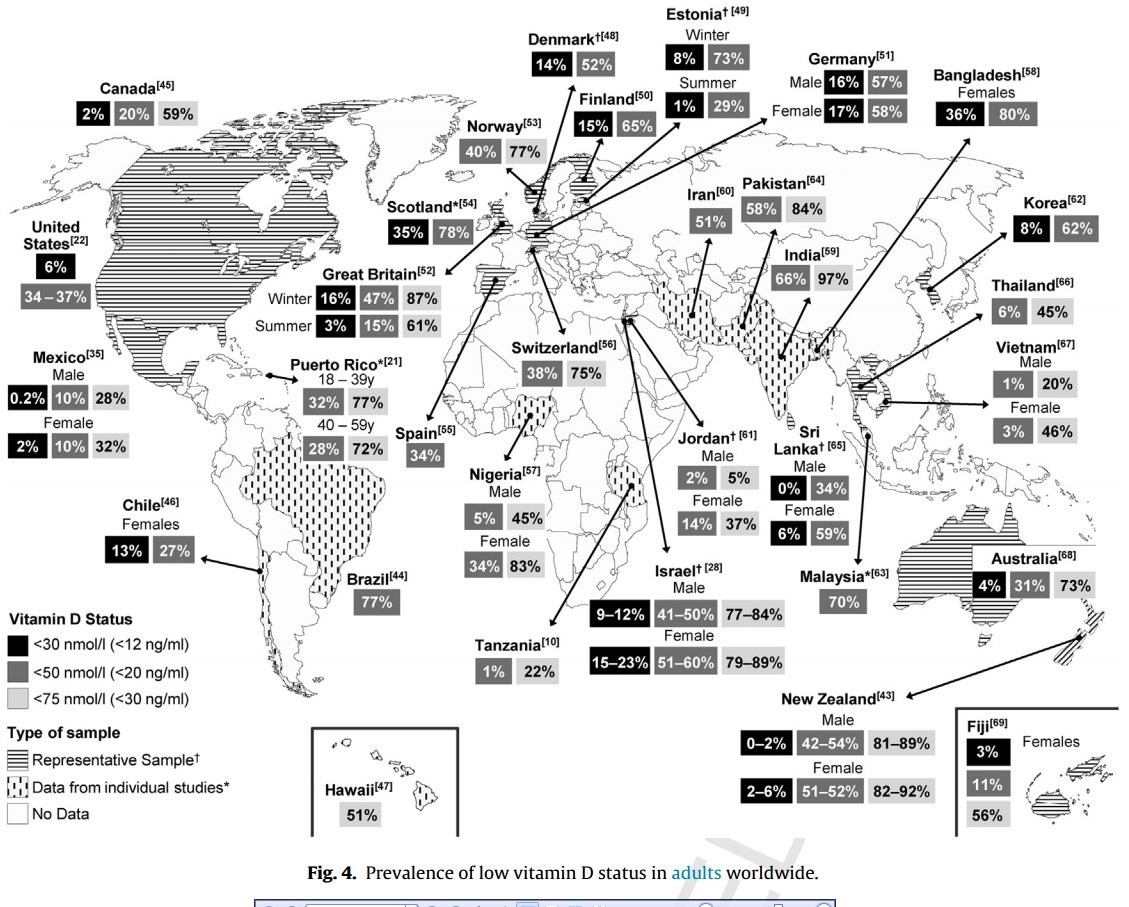Majority of South Asian children and youths have low vitamin D (85 pcnt of neonates)
High burden of hypovitaminosis D among the children and adolescents in South Asia: a systematic review and meta-analysis
J Health Popul Nutr. 2022 Mar 17;41(1):10. doi: 10.1186/s41043-022-00287-w.
Mahbubul H Siddiqee # 1 2, Badhan Bhattacharjee # 3 4, Umme Ruman Siddiqi 5, Mohammad Meshbahur Rahman 6
Background: Vitamin D is vital for the growth and development of children. While deficiency and/or insufficiency of vitamin D among South Asian children are frequently reported in the literature, the lack of a meta-analysis has left its true extent poorly characterized. In this study, we aimed to conduct a systematic review and perform meta-analyses of the prevalence of hypovitaminosis D among the children of the South Asian countries.
Methods: Two major electronic search engines (PubMed and Scopus) and one database (Google scholar) were used; original studies, conducted among South Asian children and adolescents and published between 1 January 2001 and 31 December 2019. A random-effect meta-analysis was also performed to calculate the pooled prevalence of hypovitaminosis D followed by subgroup analyses for countries and age groups.
Results: After applying inclusion and exclusion criteria, a total of 41 studies with a total population size of 18,233 were finally selected.
The overall prevalence of hypovitaminosis D was 61% [95% CI: 46% to 71%] with highly significant heterogeneity (I2 = 99.72%; p < 0.0001).
#00F:Note: Hypovitaminosis is <20 ng/mL
The average level of serum vitamin D ranged from 5 ng/mL to 34 ng/mL, with a weighted mean of 19.15 ng/mL (weighted standard deviation 11.59 ng/mL).
Country-wise analysis showed that hypovitaminosis D in
Afghanistan was the highest [ 96.2% ; 95% CI: 91% to 99%], followed by
Pakistan [94%; 95% CI: 90% to 96%],
India [64%; 95% CI: 46% to 79%],
Bangladesh [35.48%; 95% CI: 32% to 39%],
Nepal [35%; 95% CI: 1% to 83%], and
Sri Lanka [25%; 95% CI: 16% to 36%].
Age group analyses revealed that hypovitaminosis D was most prevalent among
neonates [85% ; 95% CI: 76% to 91%], followed by
school-going children [57%; 95% CI: 33% to 80%], and
preschool children [55%; 95% CI: 35% to 75%].
Conclusion: This study generates quantitative evidence and specific extent of hypovitaminosis D in the South Asian countries as a public health concern. Being the first systematic review for this region, results from this study will create awareness and will facilitate adopting mitigation strategies by the policymakers and the governments to address this problem.
📄 Download the PDF from VitaminDWiki
Vitamin D Deficincy in the region
Two thirds of South Asians have low Vitamin D (less than 20 ng) – meta-analysis Oct 2021
Vitamin D levels from lowest to highest: Middle East, China. India, S EU. N EU – Dec 2019
Indonesian women – 95 percent do not have sufficient Vitamin D – Nov 2017
Why India's vitamin D deficiency is grim - 40 pages Feb 2014
VitaminDWiki pages with INDIA in title (48 as of March 2022)
Vitamin D Deficincy in the world
Optimum category listing has items
Vitamin D deficiency is a major global public health problem – Maps Nov 2013
Prevalence of low vitamin D status in children worldwide

Prevalence of low vitamin D status in adults worldwide


click on chart for details
